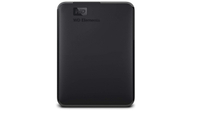How to store your DVD library on an external hard drive
The first thing you need before you can start this process is an external hard drive. Sometimes a new computer may come with an external hard drive, but most often, you have to purchase this device separately. If you’re unsure about which type of hard drive to buy, go into a computer or electronics store and consult with a tech-savvy employee. Once you have your external hard drive, you will need a DVD ripper (opens in new tab). You need a combination of two types of DVD copy software, or separate suites for first ripping DVDs and then compressing the ripped, digital version of those DVDs. Be sure to check the law in your jurisdiction regarding making backup copies of digital products, as it can differ depending on where in the world you are. These particular software suites also have the ability to compress DVD files so they will fit on your external hard drive. These suites provide all the software you’ll need, and the packs run between $40 and $60. You can also use free, open-source software such as DVD Shrink and Handbrake, but these applications are more time consuming and require more technical know-how.
How to play your DVD library from an external HDD
Once you have saved your DVD library on your external hard drive, the digital files are compressed down to a very small size. You’ll need yet another software application to actually open and un-compress the files so you can watch these movies. Don’t worry, though; it’s quicker and easier than it sounds. VLC is a useful application that allows you to easily look through and quickly play movies saved on your external hard drive. The program is free, and available on PCs, phones and tablets. If your router supports it, you can plug the hard drive into its USB port and share it on your network that way. If you’re using a NAS, or have a home server, then Plex is a good way to serve your movies to a smart TV - install the server app on your server and get it set up, then install the client app on any device that supports it - tablets, TVs, home computers (opens in new tab), smartphones (opens in new tab), you name it.

